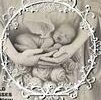Baby Clothing – Choosing the Right Style For Your Baby
The tiniest babies grow at an amazing rate, and they need lots of clothes. Clothes should be soft, easy to dress and undress, and durable. Choosing natural fibres, such as cotton, means the clothes will be breathable and gentle on your baby’s sensitive skin. It also washes well and is hypoallergenic, which helps if your baby has allergies. Look for organic cotton clothes if possible, as these are more environmentally friendly and free from harmful pesticides and chemicals. When shopping for newborn clothes, look for onesies with a velcro front that make diaper changes quick and simple. You’ll also want to stock up on leggings, which are cozy and soft for your little one. Try to find leggings that don’t have a tight waistband, which can press against your baby’s tummy and cause discomfort. For cold weather, consider wool-knit booties that will keep the tiniest feet warm and protect them from chilly floors. Baby clothing comes in a wide range of adorable styles, so your little one can express their personality. Look for cute prints and colours, or pick a style that coordinates with their nursery decor. In addition to tees and pants, you can also find dresses, bodysuits, rompers, tunics, pajamas, hats, sweaters, and outerwear. Many newborns are born with umbilical cord stumps, which are irritated by tight clothing and can pull on the sensitive skin around the base of the navel. Try to find clothes that don’t have a tight neckline or waistband, and instead use snaps to fasten. This way, you don’t need to pull them over your baby’s head, and it’s easier for the umbilical cord stump to air dry and heal. During the warmer summer months, you can dress your baby in one-piece rompers with short sleeves and a snap closure at the crotch. Rompers are also popular in winter because they allow your baby to move freely and help with nappy changing. Look for dresses and rompers that have foldover scratch mitts, which will help prevent your baby from accidentally scratching themselves. Babies tend to be a bit messy when eating and drinking, so you’ll need lots of bibs. You can buy a set of cloth bibs in various sizes and patterns to match your baby’s outfit, or opt for plastic bibs that are less likely to slip off during mealtime. Look for bibs that are absorbent and have adjustable fastenings to ensure they’re a snug fit, as well as ones with soft, wipeable fabric. You can purchase newborn clothes online from a wide range of retailers, but be sure to read the product details carefully before making a purchase. Some brands have special washing instructions that prevent shrinkage and help the clothes last longer. Look for tags with care instructions and sizes, as well as a size guide on the retailer’s website. This will ensure you buy the right size for your baby and avoid any unwanted surprises later on.
